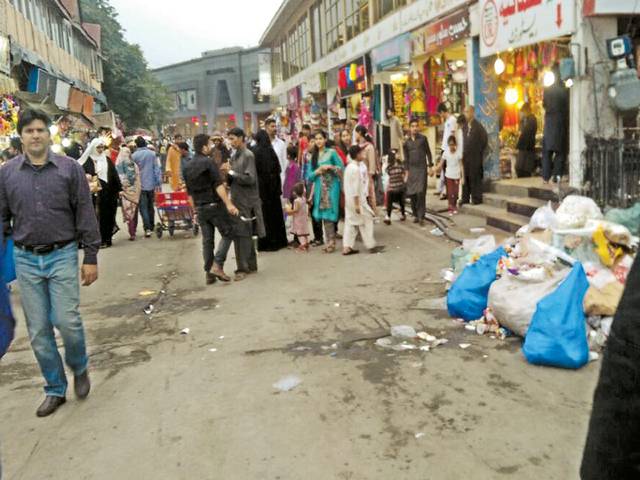Islamabad - Once a picturesque hill station, it is not impossible to mistake Murree for a garbage dump now. Tourists throw soda bottles, boxes, shopping bags and wrappers on the roads, hillsides and sidewalks. Dumpsters are either absent or not used and the waste presents a sickening sight.
Their beauty has been horrendously defiled by the hands of men, women and children whose conscience does not forbid them from littering the countryside. Similar scenes are witnessed when visiting the Galiyan, Ayubia, Swat, Kalaam, Naran or Kaghan.
“When I was at a restaurant on the road from Murree to Nathia Gali, I saw that there was so much garbage right behind the building and afterwards I couldn’t bring myself to eat,” said Zaryab Zahid, a university student taking a summer holiday with his family.
Passing by the road that leads on from Pindi Point in Murree to a less visited hiking trail, you simply have to look around and even as the hillsides stand still and melancholy, people walk by inconsiderately leaving their trash everywhere even when trash bins are made available nearby.
“Especially when people come across monkeys - which are abundant in these areas - they literally throw everything they possibly can on the roads,” elaborates Zahid. “Once, when I asked a woman in Murree why she didn’t tell her child to dispose off his wrapper properly, she simply shrugged and said the little boy couldn’t carry it around and she hadn’t really thought about it.”
What’s shocking is especially when parents do this and don’t care about what kind of teaching they are imparting on their toddlers. When asked about this behaviour, tourists are not shameful at all, leaving residents (and other tourists) in great discomfort.
Haider Sial, Murree Cantonment Board Executive Officer, said that, “For the Murree Cantonment area, there are dustbins installed along roads and pathways after every 20 to 25-feet. Secondly, every year during the vacation season, we put up banners all around for the sole purpose of informing tourists. These are simple messages, easy to grasp, for example, “Throw Trash in the Bins”, “Keep Murree Clean”, “No Spitting” and so on and so forth.”
In the summer months, when heat and humidity in the twin cities coincides with children’s summer vacations and the cheapest refuge are the Murree Hills, more than 12,000 people visit daily. This means that around 3000 cars enter and leave the area out of which 25 per cent have diesel fuelled engines.
Although diesel cars are all but phased out in the major cities, some roads in mountainous regions are so dilapidated that only local jeeps can be employed which all have diesel engines.
The only option is to hire these jeeps and add to emissions that often cause cancer, adversely affect the cardiovascular and respiratory systems as well as contributing to global climate change.
Sial presented the situation when speaking to The Nation, “As for our manual garbage disposal system, we have sweepers working from 6AM to 10PM, thereby transferring the trash to the dustbins which is later on collected by garbage disposal trucks in mornings and evenings.
Finally, the waste reaches the dumping site as mandated by the RWMC (Rawalpindi Waste Management Company). At present, garbage collected is an average of more than 3 ton daily. Furthermore, TMA (Tehsil Municipal Administration) is responsible for the area outside Cantonment jurisdiction. ”
The only thing that can actually work - in the long term - to keep the beauty of these tourist attractions intact is for people of the country to realize the error of their ways.
“People have even taken to vandalizing of public places. There is no way to detain anyone who doesn’t pay attention to the signs. We can only do so much and it is up to the people to act like responsible citizens of the state,” laments Sial.
dua anjum






